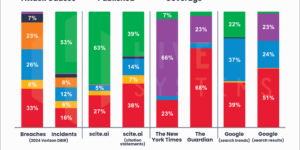Following the Trump administration’s “Workforce Development Week,” I’m particularly appreciative of the administration’s support for apprenticeships as a way to spur job growth.
There simply aren’t enough skilled workers to go around. Many sectors, including our own, have neglected to consider apprenticeships as a way to fill this gap. We shouldn’t anymore.
Apprenticeships are currently underutilized in the U.S. despite having a proven record of good outcomes for workers in other regions, including Europe. There were more than 505,000 U.S. apprentices in training in fiscal year 2016, a figure much smaller than the 13.3 million students enrolled in four-year colleges last year.
Those who complete the training are well rewarded. According to the DOL, 90 percent of Americans who finish apprentice training land a job, and their average starting salary is $60,000 compared to the $49,785 average for new graduates in 2016.
With these encouraging figures, you would think more businesses would embrace apprenticeships as a way to develop talent and encourage job creation. But many companies—notably professional and financial services firms—continue to neglect them, despite looming talent shortages.
Of the more than 8,000 active apprenticeship programs registered with the Labor Department, almost half are in the construction industry and 20 percent are in manufacturing. Other sectors need to be taking up the mantle and developing the next generation of talent through apprenticeships.
Insurance is one sector that, despite millions of unemployed Americans, faces a major talent gap, with nearly 400,000 employees expected to retire from the insurance workforce in the next few years, according to the U.S. Bureau of Labor Statistics. Moreover, recent studies suggest millennials are not particularly interested in working for insurance carriers, which is creating added pressure on insurers to rethink their recruiting strategies.
Instead of screening out resumes across professional services, we need to be screening in new talent and expanding the pool of beyond candidates with a four-year degree. The DOL counts the number of current financial and professional services apprenticeships at an astonishingly low 70.
My own company, Zurich North America, started a U.S. apprenticeship program a few years ago. We have been working to bring the European apprenticeship model—more commonly known for training people in trades such as skilled manufacturing but also widely used to train white-collar workers—to the U.S.
We currently have 31 apprentices and have made the commitment to train at least 100 by 2020. The curriculum includes three days of on-the-job training at Zurich and two days of classwork at William Rainey Harper College. Others in the insurance industry, including The Hartford and Aon, have followed our lead, and we hope more professional services firms double-down with their own programs.
Apprenticeship programs are a powerful way to change the dynamic of how people think about career paths in the United States. What’s more, they offer clear economic benefits by helping businesses meet the demand for skilled workers while providing better job and pay prospects for those involved. The prior administration thought so as well, offering rare common ground between political parties. Now it’s time for businesses, particularly within the so-called white-collar professions, to answer the call.


















 Slideshow: Carrier Management’s 2024 Top Editor’s Picks (Unlocked)
Slideshow: Carrier Management’s 2024 Top Editor’s Picks (Unlocked)  Carrier Management’s 2024 Top Features (Reader’s Picks Unlocked)
Carrier Management’s 2024 Top Features (Reader’s Picks Unlocked)  Dear Elon and Vivek: Insurance Commissioners Urge DOGE to Ditch FIO
Dear Elon and Vivek: Insurance Commissioners Urge DOGE to Ditch FIO  Catastrophe-Bond Issuance Pushes Overall Market to Almost $50 Billion
Catastrophe-Bond Issuance Pushes Overall Market to Almost $50 Billion 









